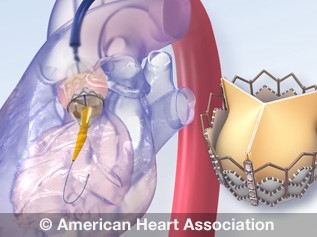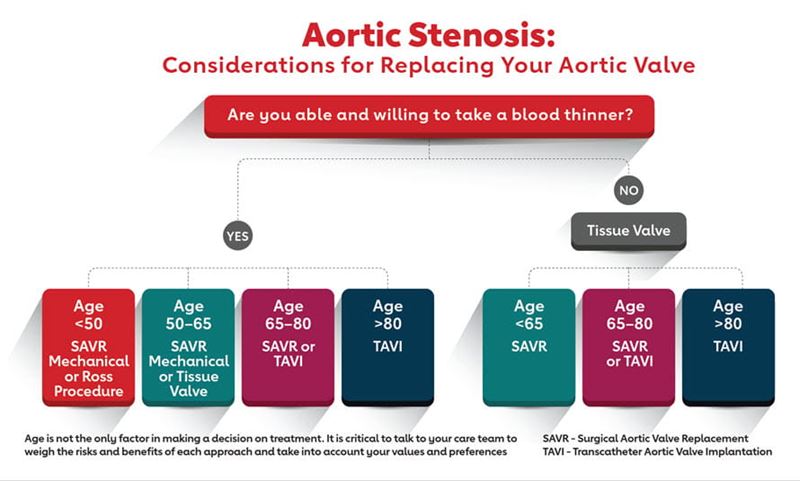What is TAVR? (TAVI)
During this minimally invasive procedure, a new valve is inserted without removing the old, damaged valve. The new valve is placed inside the diseased valve. The surgery may be called a transcatheter aortic valve replacement (TAVR) or transcatheter aortic valve implantation (TAVI).
Valve-within-valve — How does it work?
Somewhat similar to placing a stent in an artery, the TAVR approach delivers a fully collapsible replacement valve to the valve site through a catheter.
Once the new valve is expanded, it pushes the old valve leaflets out of the way, and the tissue in the replacement valve takes over the job of regulating blood flow.
This procedure is available for people with symptomatic severe aortic stenosis at low, intermediate or high risk for standard valve replacement surgery.
What is involved in a TAVR procedure?
Valve replacement usually requires an open-heart procedure with a “sternotomy,” in which the chest is surgically opened for the procedure. The TAVR or TAVI procedure can be done through very small openings that leave all the chest bones in place.
While TAVR is not without risks, it provides beneficial treatment options to people who may not have been considered for valve replacement. A person's experience with a TAVR procedure may be similar to a coronary angiogram in terms of recovery. You will likely spend less time in the hospital after TAVR compared to surgical valve replacement.
The TAVR procedure is performed using one of two approaches, allowing the cardiologist or surgeon to choose which one provides the best and safest way to access the valve:
- Transfemoral approach: Entering through the femoral artery (large artery in the groin), which does not require a surgical incision in the chest.
- Transapical approach: Using a minimally invasive surgical approach with a small incision in the chest and entering through a large artery in the chest or through the tip of the left ventricle (the apex).
Who's a good candidate for this type of valve surgery?
The procedure is available to people in all risk categories.
TAVR can be an effective option to improve the quality of life in people who otherwise have limited choices for the repair of their aortic valve.
View Aortic Stenosis: Considerations for Replacing Your Aortic Valve (PDF)
Is there financial assistance available for people in need of TAVR or TAVI valve replacement?
TAVR is approved and available for qualifying patients receiving Medicare and Medicaid. More information is available on the Centers for Medicare & Medicaid Services (CMS) website. Learn more about health care laws and government programs seeking to provide affordable coverage at HealthCare.gov(link opens in new window). The Heart Valve CareLine can help you navigate the insurance and medical world as it relates to your diagnosis.
Additional resources:
- Answers by Heart sheets: What is TAVR? (PDF) | Spanish (PDF)
- Pre-surgery Checklist (PDF) | Spanish (PDF)
- Recovery Milestones Checklist (PDF) | Spanish (PDF)
Support that lifts you up

Our online community of patients, survivors and caregivers is here to keep you going no matter the obstacles. We’ve been there, and we won’t let you do it alone.







